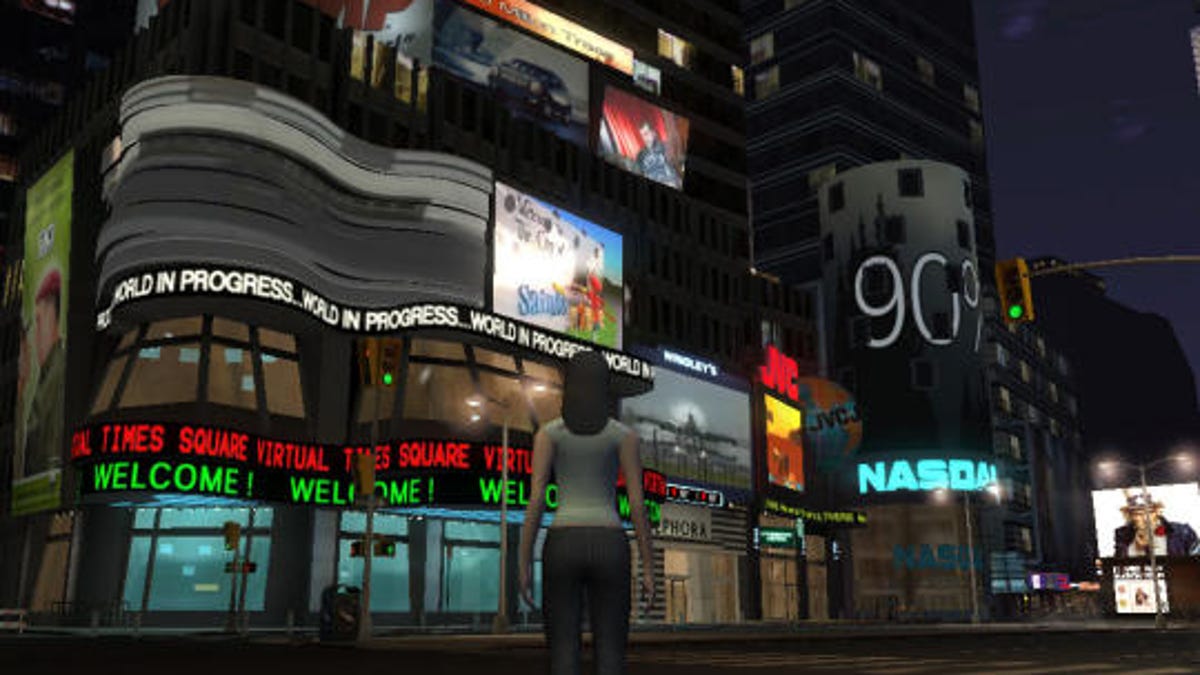Multiverse touts extensible virtual-world effort
Built around a single virtual world that developers can expand how they see fit, <i>Places</i> will tie in social networks and 3D entertainment options.

The Multiverse Network, a developer of virtual world platform software, announced Wednesday that it was unveiling what it calls Places, two related social elements that tie Multiverse users together.
Essentially connective tissue for users of the Multiverse platform, Places has two separate components.
The first is a social networks application that automatically connects people using Multiverse virtual worlds together with others who are also friends in social networks like Facebook.
The second part of Places is a new virtual world centered around a digital representation of Manhattan's Times Square. Now anyone who installs Multiverse's World Browser--the basic Multiverse virtual world software--will be able to enter the Times Square environment and connect and socialize with friends, play games, view interactive entertainment, and meet and greet in personal, private destinations.
This is notable for two reasons, and seems to be a culmination of much of what Multiverse has been working on the last couple of years.
On the one hand, until now, Multiverse has fashioned itself strictly as a platform provider, offering others the ability to build virtual worlds using its software. On the other, Multiverse last year unveiled a prototype of the Times Square environment as a showcase for its ability to host large numbers of people on a single server.
But from the beginning, Multiverse offered the promise of tying users of all the virtual worlds built on top of its platform together. It was never entirely clear how that would work, and to date, there had been no publicly available, completed worlds made using the software.
Now, however, it is clear Multiverse is using the Places model to showcase its technology and demonstrate that its platform is capable of supporting a 3D social virtual world, somewhat along the lines of Second Life.
Disclosure: My wife works for Second Life publisher Linden Lab.
Another interesting piece of Places is that it is, as Multiverse puts it, "an open-source virtual world." This means, the company said, that developers can "access, modify, and add to its user interface, avatar behaviors, menu system, art assets, avatars and--most importantly--its game play or structured interaction capabilities."
This would seem to indicate that Multiverse will be allowing users to make wholesale changes to the Places virtual world along the lines of the kinds of modifications and content creation that is possible in Second Life.
What's not clear is the scope that developers will have with these tools and whether they will be able to make adult content.
This is interesting because one way that Multiverse has tried to position itself to corporate clients wanting to build a virtual world on its platform is that those clients wouldn't have to worry about their own users encountering objectionable content.
In a separate announcement also made Wednesday, Multiverse said that Oscar-winning filmmaker James Cameron--a member of the company's board of directors--plans to use the platform to build a virtual world based on his film, Titanic.
Called Places in Time: Titanic, it will be structured as an educational environment in which users can explore much about the voyage and fate of the doomed ship.
The Titanic virtual world will be a "destination" for users of Places and is clearly meant to demonstrate how third-party developers can expand upon the platform.

